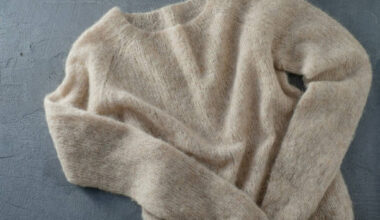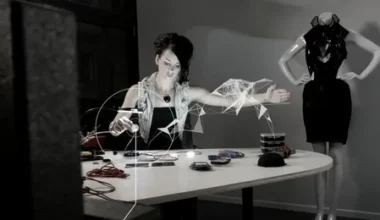A unique and engaging experience, fashion design camps provide budding designers the chance to explore their creativity, hone their talents, and learn about the exciting world of fashion. These summer camps unite young enthusiasts with a variety of backgrounds, encouraging teamwork, creativity, and a love of design. Let’s explore the intriguing world of fashion design camps and see why aspiring designers are gravitating toward them.
Unleashing Creativity
Participants in fashion design camps are encouraged to express their individuality and let their imaginations run wild in these creative playgrounds. Campers gain an understanding of the foundations of fashion design, including sketching, pattern-making, sewing, and garment construction, through practical workshops, design challenges, and group projects. Under the supervision of seasoned mentors and business experts, participants experiment with materials, investigate various methods, and realize their creative concepts.
Experiential Learning
The focus on hands-on learning is one of the main draws of fashion design camps. Campers get the chance to tour textile mills, clothing factories, museums, and design studios to learn about the inner workings of the fashion industry directly from the source. Participants in these field visits are exposed to every step of the design process, from concept creation and fabric selection to production and marketing. Through immersion in authentic environments, campers get significant understanding of the complex dynamics of the fashion industry.
Collaboration and Networking
Participants in fashion design camps can share ideas, work together on projects, and create lifetime connections in a collaborative and encouraging environment. Campers discover the value of collaboration, communication, and problem-solving via group exercises, team challenges, and design competitions—skills that are crucial in the fast-paced world of fashion. Additionally, fashion design camps offer beneficial networking opportunities, enabling attendees to make connections with industry insiders, invited lecturers, and other enthusiasts, opening doors to potential future partnerships and mentorship.
Exploring Trends and Technologies
Participants in fashion design camps not only improve their design abilities but also acquire knowledge about how the fashion business is being shaped by rising technologies, sustainable practices, and current trends. Workshops on 3D printing, eco-friendly materials, and digital design tools enable campers to be creative and adjust to the ever changing fashion scene. Those that keep up with industry trends and adopt new technology are better equipped to succeed in the cutthroat world of fashion design and leave a lasting impact on the profession.
Empowering Creativity
Fashion design camps are essential for developing young designers’ creativity, encouraging self-expression, and enabling them to follow their inclinations. These camps encourage participants to dream large, think creatively, and push the limits of traditional design by offering a welcoming and encouraging environment. Participants leave fashion design camps with renewed confidence, skills, and a greater understanding of the art of fashion, regardless of their career goals as designers, stylists, entrepreneurs, or industry leaders.
Which is the best university to study fashion?
The “best” institution to study fashion will depend on a number of aspects, including as reputation, faculty knowledge, industry contacts, program offers, geography, career ambitions, and personal preferences. Numerous academic establishments globally are acknowledged for their exceptional fashion education programs and have garnered praise for nurturing gifted designers, stylists, and business executives. The following esteemed colleges are well-known for their fashion studies:
- Central Saint Martins (CSM), University of the Arts London (UAL): Central Saint Martins is a London, UK-based fashion school that is routinely rated among the best in the world. It provides a large selection of undergraduate and graduate courses in fashion administration, fashion communication, and design.
- Parsons School of Design, The New School – Based in New York City, Parsons is renowned for its innovative approach to fashion education and its influential alumni network. It provides graduate and undergraduate courses in fashion studies, fashion design, and related fields.
- London College of Fashion (LCF), University of the Arts London (UAL) – Another prestigious institution within the UAL network, LCF offers a diverse range of fashion programs, including fashion design, fashion management, fashion journalism, and fashion photography.
- Fashion Institute of Technology (FIT): FIT is a New York City-based educational institution renowned for its cutting-edge facilities, industry connections, and extensive curriculum. It provides courses in textile development, fashion design, fashion business management, and other subjects.
- Polimoda – Based in Florence, Italy, Polimoda is one of Europe’s leading fashion schools, offering undergraduate and postgraduate programs in fashion design, fashion business, luxury management, and fashion marketing.
- Istituto Marangoni: Known for its close ties to the fashion industry and emphasis on creativity and innovation, Istituto Marangoni is a globally renowned fashion school with campuses in Shanghai, London, Florence, Milan, and Paris.
- Royal College of Art (RCA) – Located in London, RCA offers postgraduate programs in fashion design, fashion accessories, and textiles, focusing on advanced research and experimentation in fashion.
- Located in Antwerp, Belgium, the Antwerp Royal Academy of Fine Arts (Koninklijke Academie voor Schone Kunsten van Antwerpen) is a distinguished institution that has produced some of the most significant designers in the fashion world.
- Tokyo, Japan-based Bunka Fashion College is well-known for both its demanding academic program and its influence on Japanese fashion.
- Savannah College of Art & Design (SCAD) – SCAD provides a range of fashion programs with an emphasis on creativity, innovation, and professional development. SCAD has campuses in Savannah, Atlanta, and Hong Kong.
These are only a handful of the well-known colleges and universities with outstanding fashion departments. When choosing the ideal university for their fashion education, prospective students must do their homework and take into account various aspects, including program curriculum, faculty expertise, industry contacts, alumni achievement, and personal preferences.
Can a science student study fashion?
Yes, without a doubt! It is possible for a science student to major in fashion and work in the fashion industry. A background in science can offer essential skills and views that are useful in the fashion industry, even though it may not appear like they are related at first. A science student can effectively switch to studying fashion for the following reasons:
Transferable Skills
Analytical thinking, problem-solving, attention to detail, and research abilities are all heavily emphasized in science education, and these are all very applicable to the fashion industry. A variety of facets of fashion design, production, marketing, and administration can benefit from these abilities.
Creativity and Innovation
Despite their apparent differences, science and fashion are both about creativity and invention. Students studying science frequently have creative thinking abilities that they can use to various aspects of the fashion industry, such as textile technology, sustainable fashion, and fashion design.
Interdisciplinary Opportunities
The field of fashion is multidisciplinary, encompassing art, design, technology, sustainability, business, and social sciences. Students studying science can use their interdisciplinary training to study fashion in specialist fields including materials science, bio-fabrication, wearable electronics, and fashion technology.
Educational Pathways
Programs that welcome students from a variety of educational backgrounds, including science, are offered by numerous colleges and fashion schools. To facilitate scientific students’ seamless transition into the fashion industry, these programs may provide foundational courses in textile science, garment building, design principles, and fashion essentials.
Career Opportunities
Beyond design, the fashion sector offers a wide range of job prospects, including positions in supply chain management, sustainability, retail management, product development, merchandising, marketing, and fashion technology. Science majors can contribute to innovation and problem-solving in the industry by bringing a distinct viewpoint and skill set to these positions.
Ultimately, the secret to making a transition from a science background to studying and working in the fashion sector is a strong passion for fashion and a readiness to learn and adapt. Science students can pursue fulfilling careers in fashion and make significant contributions to this dynamic and always changing sector if they are willing to put in the necessary time, effort, and ingenuity.
Is fashion and design a course in the university?
Yes, colleges and other specialized institutions all around the world regularly offer courses or programs in fashion and design. These courses offer thorough instruction and training in a range of fashion, design, and related subjects. Enrolling in fashion and design courses equips students with the necessary information, abilities, and hands-on experience to pursue employment in the fashion business. The following are some typical university course offerings in fashion and design:
Fashion Design
The artistic and technical aspects of designing apparel, accessories, and footwear are the main topics of fashion design courses. Fashion illustration, textile science, draping, garment manufacturing, and fashion history are among the topics covered in the classroom. A fashion collection or portfolio is usually created as the capstone project for fashion design degrees.
Fashion Management and Merchandising
The business aspect of the fashion industry, including retail management, marketing, branding, procurement, merchandising, and fashion forecasting, is covered in fashion merchandising and management courses. Students gain knowledge of retail operations, market analysis, consumer behavior, and fashion business tactics.
Textile Design
The fabrication and manipulation of textiles for use in fashion, interior design, and other applications is the main focus of textile design courses. Textile materials, knitting, weaving, surface design, dying and printing methods, and textile technology are all taught to students. Hands-on experimentation with textile prototypes and samples is a common feature of textile design curriculum.
Fashion Communication
Courses on fashion communication examine the function of marketing, communication, and the media in the fashion sector. Fashion journalism, digital media, advertising, public relations, style, visual merchandising, and fashion photography are among the topics covered by students’ education. Programs in fashion communication include a strong emphasis on branding, visual communication, and effective narrative.
Fashion Technology
Courses on fashion technology include innovation and technology into the process of designing and producing clothing. Pupils gain knowledge of digital pattern-making, wearable technologies, 3D modeling, sustainable fashion practices, CAD (computer-aided design) software, and production methods. Students enrolled in fashion technology programs are prepared for professions in the nexus of fashion and technology.
These are just a handful of the university-level fashion and design courses that are available. Students may also find specialized programs in fields including costume design, luxury management, sustainable fashion, fashion journalism, fashion marketing, and more, depending on the university. When selecting a fashion and design course that fits with their interests and career aspirations, prospective students should investigate various programs, curriculum options, teacher expertise, industry contacts, and campus facilities.
Which country has the best fashion designers?
It is subjective and susceptible to change based on personal opinions, industry trends, cultural influences, and historical background to determine which nation produces the “best” fashion designers. Global fashion is a business, and there are skilled designers in many different nations. Certain nations have, nevertheless, come to be known for their contributions to the fashion industry and for being home to well-known designers. These are a few nations renowned for having significant fashion scenes:
France
The country is widely acknowledged as a global leader in fashion, with Paris serving as its epicenter. Famous fashion houses like Chanel, Dior, Louis Vuitton, Givenchy, and Saint Laurent have shaped the industry for decades, and their influence has been felt on international fashion trends.
Italy
Italy is well-known for its exquisite craftsmanship, luxurious brands, and rich fashion history. Prestigious fashion houses like Gucci, Prada, Versace, Armani, Dolce & Gabbana, and Valentino can be found in Milan, the Italian city known as the fashion capital. Italian designers are renowned for their timeless elegance, fine craftsmanship, and meticulous attention to detail.
United States
Big centers for fashion design, production, and innovation are cities like New York and Los Angeles. The country boasts a thriving and diverse fashion sector. American designers have gained international recognition for their contributions to contemporary fashion, as evidenced by the success of labels like Tommy Hilfiger, Marc Jacobs, Ralph Lauren, Calvin Klein, and Michael Kors.
United Kingdom
The UK is known for its inventiveness, ingenuity, and eclectic style. It also boasts a strong fashion legacy. Particularly in London, there is a reputation for cutting-edge fashion and up-and-coming artists. The fashion business has been profoundly influenced by British designers including Stella McCartney, Burberry, Vivienne Westwood, Alexander McQueen, and Christopher Kane.
Japan
The country is well-known for its cutting-edge fashion, original creative ideas, and meticulous attention to detail. Japanese designers are pushing the envelope and redefining fashion aesthetics in Tokyo, which is a hotbed of innovation and invention. The distinctive vision and artistic expression of brands such as Comme des Garçons, Issey Miyake, Yohji Yamamoto, and Kenzo are highly acclaimed.
Belgium
Despite being a minor participant in the global fashion scene, Belgium has given birth to some of the most significant and innovative designers of the last several years. Designers from Belgium, like Ann Demeulemeester, Martin Margiela, Raf Simons, and Dries Van Noten, are renowned for their avant-garde styles, creative methods, and aesthetic sensitivities.
These are only a few instances of nations renowned for their contributions to the fashion sector and for being home to important fashion designers. The “best” fashion designers are ultimately found all around the world, each adding their special talent, perspective, and inventiveness to the always changing fashion industry.
In summary: Fashion design camps
To sum up, fashion design camps are a life-changing opportunity for aspiring designers, sparking their creative spark and equipping them with the skills and information needed to start thrilling careers in the fashion industry. Participants learn about the ability of design to inspire, create, and improve the world via practical learning, teamwork, and discovery. Fashion design camps aim to allow people to express themselves, pursue their goals, and influence the direction of fashion, not only make clothes.



